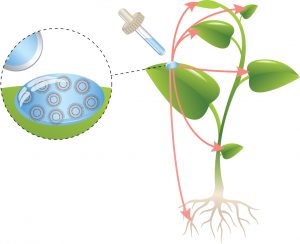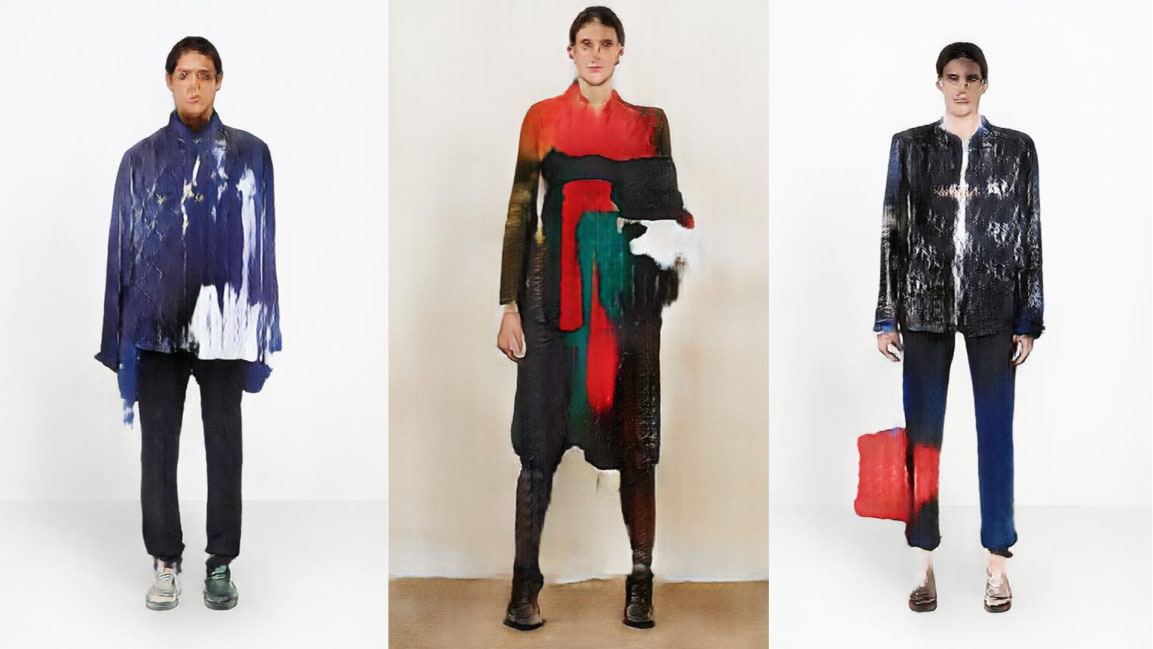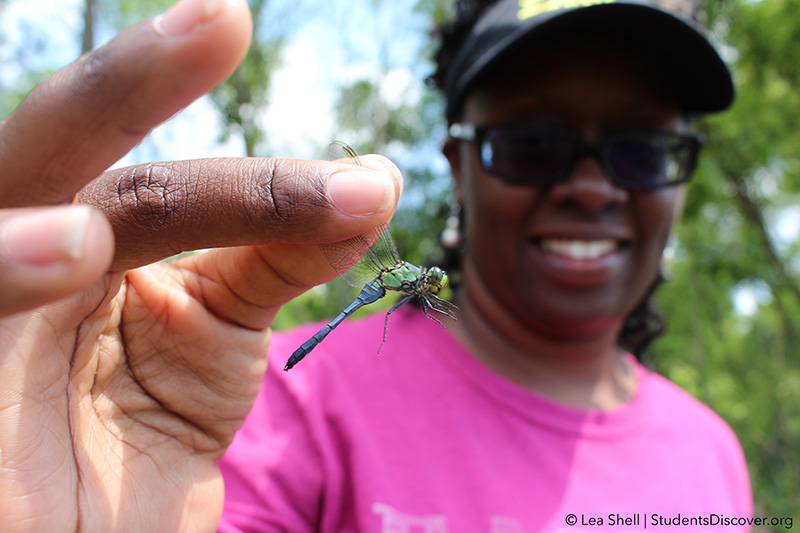As more than one observer has noted, this April 19, 2021 budget is the first in two years. Predictably, there has been some distress over the copious amounts of money being spent to stimulate/restart the economy whether it needs it or not. Some have described this as a pre-election budget. Overall, there seems to be more satisfaction than criticism.
Maybe a little prescient?
After mentioning some of the government’s issues with money (Phoenix Payroll System debacle and WE Charity scandal) in my April 13, 2021 posting about the then upcoming Canadian Science Policy Centre’s post-budget symposium, I had these comments (which surprise even me),
…
None of this has anything to do with science funding (as far as I know) but it does set the stage for questions about how science funding is determined and who will be getting it. There are already systems in place for science funding through various agencies but the federal budget often sets special priorities such as the 2017 Pan-Canadian Artificial Intelligence Strategy [emphasis added April 29, 2021] with its attendant $125M. As well,Prime Minister Justin Trudeau likes to use science as a means of enhancing his appeal. [emphasis mine] See my March 16, 2018 posting for a sample of this, scroll down to the “Sunny ways: a discussion between Justin Trudeau and Bill Nye” subhead.
…
Budget 2021 introduced two new strategies, the first ones since the 2017 budget: the Pan-Canadian Genomics Strategy and the National Quantum Strategy. As for whether this ploy will help enhance Trudeau’s appeal, that seems doubtful given his current plight (see an April 27, 2021 CBC online news item “PM says his office didn’t know Vance allegations were about sexual misconduct” for a description of some of Trudeau’s latest political scandal).
Science in the 2021 budget (a few highlights)
For anyone who wants to take a look at the 2021 Canadian Federal Budget, Chapters Four and Five (in Part Two) seems to contain the bulk of the science funding announcements. Here are the highlights, given my perspective, from Chapter Four (Note: I don’t chime in again until the “A full list …. subhead):
4.6 Investing in World-leading Research and Innovation
A plan for a long-term recovery must look to challenges and opportunities that lie ahead in the years and decades to come. It must be led by a growth strategy that builds on the unique competitive advantages of the Canadian economy, and make sure that Canada is well-positioned to meet the demands of the next century. This work begins with innovation.
To drive growth and create good, well-paying jobs, entrepreneurs and businesses need to be able to translate Canada’s world-class leadership in research into innovative products and services for Canadians, and for the world.
These investments will help cement Canada’s position as a world leader in research and innovation, building a global brand that will attract talent and capital for years to come.
Supporting Innovation and Industrial Transformation
Since its launch in 2017, the Strategic Innovation Fund has been helping businesses invest, grow, and innovate in Canada. Through its efforts to help businesses make the investments they need to succeed, the fund is well-placed to support growth and the creation of good jobs across the Canadian economy—both now and in the future.
- Budget 2021 proposes to provide the Strategic Innovation Fund with an incremental $7.2 billion over seven years on a cash basis, starting in 2021-22, and $511.4 million ongoing. This funding will be directed as follows:
- $2.2 billion over seven years, and $511.4 million ongoing to support innovative projects across the economy—including in the life sciences, automotive, aerospace, and agriculture sectors.
- $5 billion over seven years to increase funding for the Strategic Innovation Fund’s Net Zero Accelerator, as detailed in Chapter 5. Through the Net Zero Accelerator the fund would scale up its support for projects that will help decarbonize heavy industry, support clean technologies and help meaningfully accelerate domestic greenhouse gas emissions reductions by 2030.
The funding proposed in Budget 2021 will build on the Strategic Innovation Fund’s existing resources, including the $3 billion over five years announced in December 2020 for the Net Zero Accelerator. With this additional support, the Strategic Innovation Fund will target investments in important areas of future growth over the coming years to advance multiple strategic objectives for the Canadian economy:
- $1.75 billion in support over seven years would be targeted toward aerospace in recognition of the longer-lasting impacts to this sector following COVID-19. This is in addition to the $250 million Aerospace Regional Recovery Initiative, outlined in section 4.2, providing a combined support of $2 billion to help this innovative sector recover and grow out of the crisis.
- $1 billion of support over seven years would be targeted toward growing Canada’s life sciences and bio-manufacturing sector, restoring capabilities that have been lost and supporting the innovative Canadian firms and jobs in this sector. This is an important component of Canada’s plan to build domestic resilience and improve long-term pandemic preparedness proposed in Chapter 1, providing a combined $2.2 billion over seven years.
- $8 billion over seven years for the Net Zero Accelerator to support projects that will help reduce Canada’s greenhouse gas emissions by expediting decarbonization projects, scaling-up clean technology, and accelerating Canada’s industrial transformation. More details are in Chapter 5.
Renewing the Pan-Canadian Artificial Intelligence Strategy
Artificial intelligence is one of the greatest technological transformations of our age. Canada has communities of research, homegrown talent, and a diverse ecosystem of start-ups and scale-ups. But these Canadian innovators need investment in order to ensure our economy takes advantage of the enormous growth opportunities ahead in this sector. By leveraging our position of strength, we can also ensure that Canadian values are embedded across widely used, global platforms.
- Budget 2021 proposes to provide up to $443.8 million over ten years, starting in 2021-22, in support of the Pan-Canadian Artificial Intelligence Strategy, including:
- $185 million over five years, starting in 2021-22, to support the commercialization of artificial intelligence innovations and research in Canada.
- $162.2 million over ten years, starting in 2021-22, to help retain and attract top academic talent across Canada—including in Alberta, British Columbia, Ontario, and Quebec. This programming will be delivered by the Canadian Institute for Advanced Research.
- $48 million over five years, starting in 2021-22, for the Canadian Institute for Advanced Research to renew and enhance its research, training, and knowledge mobilization programs.
- $40 million over five years, starting in 2022-23, to provide dedicated computing capacity for researchers at the national artificial intelligence institutes in Edmonton, Toronto, and Montréal.
- $8.6 million over five years, starting in 2021-22, to advance the development and adoption of standards related to artificial intelligence.
Launching a National Quantum Strategy
Quantum technology is at the very leading edge of science and innovation today, with enormous potential for commercialization. This emerging field will transform how we develop and design everything from life-saving drugs to next generation batteries, and Canadian scientists and entrepreneurs are well-positioned to take advantage of these opportunities. But they need investments to be competitive in this fast growing global market.
- Budget 2021 proposes to provide $360 million over seven years, starting in 2021-22, to launch a National Quantum Strategy. The strategy will amplify Canada’s significant strength in quantum research; grow our quantum-ready technologies, companies, and talent; and solidify Canada’s global leadership in this area. This funding will also establish a secretariat at the Department of Innovation, Science and Economic Development to coordinate this work.
The government will provide further details on the rollout of the strategy in the coming months.
Revitalizing the Canadian Photonics Fabrication Centre
Canada is a world leader in photonics, the technology of generating and harnessing the power of light. This is the science behind fibre optics, advanced semi-conductors, and other cutting-edge technologies, and there is a strong history of Canadian companies bringing this expertise to the world. The National Research Council’s Canadian Photonics Fabrication Centre supplies photonics research, testing, prototyping, and pilot-scale manufacturing services to academics and large, small and medium-sized photonics businesses in Canada. But its aging facility puts this critical research and development at risk.
- Budget 2021 proposes to provide $90 million over five years on a cash basis, starting in 2021-22, to the National Research Council to retool and modernize the Canadian Photonics Fabrication Centre. This would allow the centre to continue helping Canadian researchers and companies grow and support highly skilled jobs.
Launching a Pan-Canadian Genomics Strategy
Genomics research is developing cutting-edge therapeutics and is helping Canada track and fight COVID-19. Canada was an early mover in advancing genomics science and is now a global leader in the field. A national approach to support genomics research can lead to breakthroughs that have real world applications. There is an opportunity to improve Canadians’ health and well-being while also creating good jobs and economic growth. Leveraging and commercializing this advantage will give Canadian companies, researchers, and workers a competitive edge in this growing field.
- Budget 2021 proposes to provide $400 million over six years, starting in 2021-22, in support of a Pan-Canadian Genomics Strategy. This funding would provide $136.7 million over five years, starting in 2022-23, for mission-driven programming delivered by Genome Canada to kick-start the new Strategy and complement the government’s existing genomics research and innovation programming.
Further investments to grow Canada’s strengths in genomics under the Strategy will be announced in the future.
Conducting Clinical Trials
Canadian scientists are among the best in the world at conducting high-quality clinical trials. Clinical trials lead to the development of new scientifically proven treatments and cures, and improved health outcomes for Canadians. They also create good jobs in the health research sector, including the pharmaceutical sector, and support the creation of new companies, drugs, medical devices, and other health products.
- Budget 2021 proposes to provide $250 million over three years, starting in 2021-22, to the Canadian Institutes of Health Research to implement a new Clinical Trials Fund.
Supporting the Innovation Superclusters Initiative
Since it was launched in 2017, the Innovation Superclusters Initiative has helped Canada build successful innovation ecosystems in important areas of the economy. Drawing on the strength and breadth of their networks, the superclusters were able to quickly pivot their operations and played an important role in Canada’s COVID-19 response. For example, the Digital Technology Supercluster allocated resources to projects that used digital technologies and artificial intelligence to help facilitate faster, more accurate diagnosis, treatment, and care of COVID-19 patients.
To help ensure those superclusters that made emergency investments to support Canada’s COVID-19 response and others can continue supporting innovative Canadian projects:
- Budget 2021 proposes to provide $60 million over two years, starting in 2021-22, to the Innovation Superclusters Initiative.
Promoting Canadian Intellectual Property
As the most highly educated country in the OECD, Canada is full of innovative and entrepreneurial people with great ideas. Those ideas are valuable intellectual property that are the seeds of huge growth opportunities. Building on the National Intellectual Property Strategy announced in Budget 2018, the government proposes to further support Canadian innovators, start-ups, and technology-intensive businesses. Budget 2021 proposes:
- $90 million, over two years, starting in 2022-23, to create ElevateIP, a program to help accelerators and incubators provide start-ups with access to expert intellectual property services.
- $75 million over three years, starting in 2021-22, for the National Research Council’s Industrial Research Assistance Program to provide high-growth client firms with access to expert intellectual property services.
These direct investments would be complemented by a Strategic Intellectual Property Program Review that will be launched. It is intended as a broad assessment of intellectual property provisions in Canada’s innovation and science programming, from basic research to near-commercial projects. This work will make sure Canada and Canadians fully benefit from innovations and intellectual property.
Capitalizing on Space-based Earth Observation
Earth observation satellites support critical services that Canadians rely on. They provide reliable weather forecasts, support military and transport logistics, help us monitor and fight climate change, and support innovation across sectors, including energy and agriculture. They also create high-quality jobs in Canada and the government will continue to explore opportunities to support Canadian capacity, innovation, and jobs in this sector. To maintain Canada’s capacity to collect and use important data from these satellites, Budget 2021 proposes to provide:
- $80.2 million over eleven years, starting in 2021-22, with $14.9 million in remaining amortization and $6.2 million per year ongoing, to Natural Resources Canada and Environment and Climate Change Canada to replace and expand critical but aging ground-based infrastructure to receive satellite data.
- $9.9 million over two years, starting in 2021-22, to the Canadian Space Agency to plan for the next generation of Earth observation satellites.
Science and Technology Collaboration with Israeli Firms
Collaborating with global innovation leaders allows Canadian companies to leverage expertise to create new products and services, support good jobs, and reach new export markets.
- Budget 2021 proposes to provide additional funding of $10 million over five years, starting in 2021-2022, and $2 million per year ongoing, to expand opportunities for Canadian SMEs to engage in research and development partnerships with Israeli SMEs as part of the Canadian International Innovation Program. This will be sourced from existing Global Affairs Canada resources. The government also intends to implement an enhanced delivery model for this program, including possible legislation.
4.7 Supporting a Digital Economy
More and more of our lives are happening online—from socializing, to our jobs, to commerce. Recognizing the fundamental shifts underway in our society, the government introduced a new Digital Charter in 2020 that seeks to better protect the privacy, security, and personal data of Canadians, building trust and confidence in the digital economy.
To make sure that Canadian businesses can keep pace with this digital transformation and that they are part of this growth, Budget 2021 includes measures to ensure businesses and workers in every region of the country have access to fast, reliable internet. It also has measures to make sure that the digital economy is fair and well reported on.
A digital economy that serves and protects Canadians and Canadian businesses is vital for long-term growth.
Accelerating Broadband for Everyone
The COVID-19 pandemic has shifted much of our lives online and transformed how we live, work, learn, and do business. This makes it more important than ever that Canadians, including Canadian small businesses in every corner of this country, have access to fast and reliable high-speed internet. Canadians and Canadian businesses in many rural and remote communities who still do not have access to high-speed internet face a barrier to equal participation in the economy. Building on the $6.2 billion the federal government and federal agencies have made available for universal broadband since 2015:
- Budget 2021 proposes to provide an additional $1 billion over six years, starting in 2021-22, to the Universal Broadband Fund to support a more rapid rollout of broadband projects in collaboration with provinces and territories and other partners. This would mean thousands more Canadians and small businesses will have faster, more reliable internet connections.
In total, including proposed Budget 2021 funding, $2.75 billion will be made available through the Universal Broadband Fund to support Canadians in rural and remote communities. Recently, the Universal Broadband Fund provided funding to ensure Quebec could launch Operation High Speed, connecting nearly 150,000 Quebecers to high-speed internet. These continuing investments will help Canada accelerate work to reach its goal of 98 per cent of the country having high-speed broadband by 2026 and 100 per cent by 2030.
Establishing a New Data Commissioner
Digital and data-driven technologies open up new markets for products and services that allow innovative Canadians to create new business opportunities—and high-value jobs. But as the digital and data economy grows, Canadians must be able to trust that their data are protected and being used responsibly.
- Budget 2021 proposes to provide $17.6 million over five years, starting in 2021-22, and $3.4 million per year ongoing, to create a Data Commissioner. The Data Commissioner would inform government and business approaches to data-driven issues to help protect people’s personal data and to encourage innovation in the digital marketplace.
- Budget 2021 also proposes to provide $8.4 million over five years, starting in 2021-22, and $2.3 million ongoing, to the Standards Council of Canada to continue its work to advance industry-wide data governance standards.
- …
A full list of science funding highlights from the 2021 federal budget
If you don’t have the time or patience to comb through the budget for all of the science funding announcements, you can find an excellent list in an April 19, 2021posting on Evidence for Democracy (Note: Links have been removed; h/t Science Media Centre of Canada newsletter),
Previously, we saw a landmark budget for science in 2018, which made historic investments in fundamental research totaling more than $1.7 billion. This was followed by additional commitments in 2019 that included expanded support for research trainees and access to post-secondary education. While no federal budget was tabled in 2020, there have been ongoing investments in Canadian science throughout the pandemic.
Budget 2021 attempts to balance the pressing challenges of the pandemic with a long-term view towards recovery and growth. We are pleased to see strategic investments across the Canadian science ecosystem, including targeted research funding in artificial intelligence, quantum technologies, and bioinnovation. There is also a focus on climate action, which outlines a $17.6 billion investment towards green recovery and conservation. There are also noteworthy investments in research and development partnerships, and data capacity. Beyond research, Budget 2021 includes investments in childcare, mental health, Indigenous communities, post-secondary education, and support for gender-based and Black-led initiatives.
We note that this budget does not include significant increases to the federal granting agencies, or legislation to safeguard the Office of the Chief Science Advisor.
Below, we highlight key research-related investments in Budget 2021.
…
The list is here in the April 19, 2021posting.
Is it magic or how does the federal budget get developed?
I believe most of the priorities are set by power players behind the scenes. We glimpsed some of the dynamics courtesy of the WE Charity scandal 2020/21 and the SNC-Lavalin scandal in 2019.
Access to special meetings and encounters are not likely to be given to any member of the ‘great unwashed’ but we do get to see the briefs that are submitted in anticipation of a new budget. These briefs and meetings with witnesses are available on the Parliament of Canada website (Standing Committee on Finance (FINA) webpage for pre-budget consultations.
For the 2021 federal budget, there are 792 briefs and transcripts of meeting with 52 witnesses. Whoever designed the page decided to make looking at more than one or two briefs onerous. Just click on a brief that interests you and try to get back to the list.
National Quantum Strategy
There is a search function but ‘quantum’ finds only Xanadu Quantum Technologies (more about their brief in a minute) and not D-Wave Systems, which is arguably a more important player in the field. Regardless, both companies presented briefs although the one from Xanadu was of the most interest as it seems to be recommending a national strategy without actually using the term (from the Xanadu Quantum Technologies budget 2021 brief),
Recommendation 1: Quantum Advisory Board
The world is at the beginning of the second Quantum Revolution, which will result in the development and deployment of revolutionary quantum technologies, based upon the scientific discoveries of the past century. Major economies of the world, including the USA, China, Japan, EU, UK and South Korea, have all identified quantum technologies as strategically important, and have adopted national strategies or frameworks. Many of them have dedicated billions of dollars of funding to quantum technology R&D and commercialization. We urge the government to create a Quantum Advisory Board or Task Force, to ensure a coherent national strategy which involves all areas of government:research, education, industry, trade, digital government, transportation, health, defence,etc.
Recommendation 2: Continue Supporting Existing Research Centres
Canada has a long history of nurturing world-class academic research in quantum science at our universities. The CFREF [Canada First Research Excellence Fund {CFREF}] program was a welcome catalyst which solidified the international stature of the quantum research programs at UBC [University of British Columbia], Waterloo [University of Waterloo; Ontario] and Sherbrooke [University of Sherbrooke; Québec]. Many of our highly qualified team members have graduated from these programs and other Canadian universities. We urge the government to continue funding these research centers past the expiration of the CFREF program, to ensure the scientific critical mass is not dissipated, and the highly sought-after talent is not pulled away to other centers around the world.
Recommendation 3: National Quantum Computing Access Centre
Our Canadian competitor, D-Wave Systems, was started in Canada nearly 20 years ago,and has yet to make significant sales or build a strong user base within Canada. At Xanadu we also find that the most ready customers for our computers are researchers in the USA,rather than in Canada, despite the strong interest from many individual professors we speak with at a number of Canadian universities. We urge the government to create a National Quantum Computing Access Centre, through Compute Canada or another similar national organization, which can centralize and coordinate the provision of quantum computing access for the Canadian academic research community. Without access to these new machines, Canadian researchers will lose their ability to innovate new algorithms and applications of this groundbreaking technology. It will be impossible to train the future workforce of quantum programmers, without access to the machines like those of D-Wave and Xanadu.
Recommendation 4: National Quantum Technology Roundtable
Traditional, resource-based Canadian industries are not historically known for the ir innovative adoption of new technology, and the government has created many programs to encourage digitalization of manufacturing and resource industries, and also newer,cleaner technology adoption in the energy and other heavy industries. Quantum technologies in computing, communications and sensing have the potential to make exponential improvements in many industries, including: chemicals, materials, logistics,transportation, electricity grids, transit systems, wireless networks, financial portfolio analysis and optimization, remote sensing, exploration, border security, and improved communication security. We urge the government to convene national roundtable discussions, perhaps led by the NRC, to bring together the Canadian researchers and companies developing these new technologies, along with the traditional industries and government bodies of Canada who stand to benefit from adopting them, for mutual education and information sharing, roadmapping, benchmarking and strategic planning.
Recommendation 5: New Quantum Computing Institute in Toronto
The University of Toronto is the leading research institution in Canada, and one of the top research universities in the world. Many world-class scientists in quantum physics,chemistry, computer science, and electrical engineering are currently part of the Centre for Quantum Information and Quantum Control (CQIQC) at the university [University of Toronto]. British Columbia has recently announced the creation of a new institute dedicated to the study of Quantum Algorithms, and we encourage the government to build upon the existing strengths of the quantum research programs at the CQIQC, through the funding of a new,world-class research institute, focussed on quantum computing. Such an institute will leverage not only the existing quantum expertise, but also the world-class artificial intelligence and machine learning research communities in the city. The tech industry in Toronto is also the fastest growing in North America, hiring more than San Francisco or Boston. We request the government fund the establishment of a new quantum computing institute built on Toronto’s 3 pillars of quantum research, artificial intelligence, and a thriving tech industry, to create a center of excellence with global impact.
Recommendation 6: Dedicated BDC [Business Development Bank of Canada] Quantum Venture Fund
Although there is no major international firm developing and selling quantum-based technology from Canada, a number of the world’s most promising start-ups are based here. Xanadu and our peer firms are now actively shaping our business models; refining our products and services; undertaking research and development; and developing networks of customers.To date, Canadian firms like Xanadu have been successful at raising risk capital from primarily domestic funds like BDC, OMERS, Georgian Partners and Real Ventures,without having to leave the country. In order to ensure a strong “Quantum Startup”ecosystem in Canada, we request that the BDC be mandated to establish a specialist quantum technology venture capital fund. Such a fund will help ensure the ongoing creation of a whole cluster of Canadian startups in all areas of Quantum Technology, and help to keep the technologies and talent coming from our research universities within the country.
Christian Weedbrook, Xanadu Chief Executive Officer, has taken the time to dismiss his chief competitor and managed to ignore the University of Calgary in his Canadian quantum future. (See my September 21, 2016 posting “Teleporting photons in Calgary (Canada) is a step towards a quantum internet,” where that team set a record for distance.)
The D-Wave Systems budget 2021 brief does have some overlapping interests but is largely standalone and more focused on business initiatives and on the US. Both briefs mention the Quantum Algorithms Institute (QAI), which is being established at Simon Fraser University (SFU) with an investment from the government of British Columbia (see this Oct. 2, 2019 SFU press release).
Where Weedbrook is passionately Canadian and signed the Xanadu brief himself, the D-Wave brief is impersonal and anonymous.
Pan-Canadian Genomics Strategy
The Genome Canada brief doesn’t mention a pan-Canadian strategy,
List of Recommendations:
•Recommendation 1: That the government invest in mission-driven research —with line-of-sight to application —to mobilize genomics to drive Canada’s recovery in key sectors.
•Recommendation 2: That the government invest in a national genomics data strategy to drive data generation, analysis, standards, tools, access and usage to derive maximum value and impact from Canada’s genomics data assets.
•Recommendation 3: That the government invest in training of the next generation of genomics researchers, innovators and entrepreneurs to support the development of a genomics-enabled Canadian bioeconomy.
•Recommendation 4: That the government invest in long-term and predictable research and research infrastructure through the federal granting agencies and the Canada Foundation forInnovation to ensure a strong and vibrant knowledge base for recovery.
…
It’s not an exciting start but if you continue you’ll find a well written and compelling brief.
A happy April 19, 2021 GenomeCanada news release provides an overview of how this affects the Canadian life sciences research effort,
“The federal government announced $400 million for a new Pan-Canadian Genomics Strategy, including $136.7 million for Genome Canada to kickstart the Strategy, with further investments to be announced in the future. The budget recognized the key role genomics plays in developing cutting-edge therapeutics and in helping Canada track and fight COVID-19. It recognizes that Canada is a global leader in the field and that genomics can improve Canadians’ health and wellbeing while also creating good jobs and economic growth. Leveraging and commercializing this advantage will give Canadian companies, researchers, and workers a competitive edge in this growing field.
… Today’s announcement included excellent news for Canada’s long-term sustainable economic growth in biomanufacturing and the life sciences, with a total of $2.2 billion over seven years going toward growing life sciences, building up Canada’s talent pipeline and research systems, and supporting life sciences organizations.
Genome Canada welcomes other investments that will strengthen Canada’s research, innovation and talent ecosystem and drive economic growth in sectors of the future, including:
- $500 million over four years, starting in 2021-22, for the Canada Foundation for Innovation to support the bio-science capital and infrastructure needs of post-secondary institutions and research hospitals;
- $250 million over four years, starting in 2021-22, for the federal research granting councils to create a new tri-council biomedical research fund;
- $250 million over three years, starting in 2021-22, to the Canadian Institutes of Health Research to implement a new Clinical Trials Fund;
- $92 million over four years, starting in 2021-22, for adMare to support company creation, scale up, and training activities in the life sciences sector;
- $59.2 million over three years, starting in 2021-22, for the Vaccine and Infectious Disease Organization to support the development of its vaccine candidates and expand its facility in Saskatoon;
- $45 million over three years, starting in 2022-23, to the Stem Cell Network to support stem cell and regenerative medicine research; and
- $708 million over five years, starting in 2021-22, to Mitacs to create at least 85,000 work-integrated learning placements that provide on-the-job learning and provide businesses with support to develop talent and grow.
The visionary support announced in Budget 2021 puts Canada on competitive footing with other G7 nations that have made major investments in research and innovation to drive high-value growth sectors, while placing bio-innovation at the heart of their COVID-19 recoveries. Genome Canada looks forward to leading the new Pan-Canadian Genomics Strategy and to working with Innovation, Science and Economic Development Canada and other partners on the strategic investments announced today.
“To solve complex global problems, such as a worldwide pandemic and climate change, we need transdisciplinary approaches. The life sciences will play significant roles within such an approach. The funding announced today will be instrumental in driving Genome Canada’s mission to be Canada’s genomics platform for future pandemic preparedness, its capacity for biomanufacturing, and its bio-economy overall.”
– Dr. Rob Annan, President and CEO, Genome Canada
Canadian business innovation, science, and innovation—oxymoron?
Navdeep Bains was Canada’s Minister of Innovation, Science and Industry (2015-January 12, 2021) and he had a few things to say as he stepped away (from an April 16, 2021 article by Kevin Carmichael for PostMedia on the SaltWire; Atlantic Canada website),
Navdeep Bains earlier this spring [2021] spoke to me about his tenure as industry minister, which inevitably led to questions about Canada’s eroding competitiveness. He said that he thought he’d done a pretty good job of creating the conditions for a more innovative economy. But the corporate elite? Not so much.
“The ball is back in business’s court,” Bains said. “Frankly, if businesses don’t do this, I think in the long run they will struggle. They have to start changing their behaviour significantly.”
How’s that for a parting shot?
Bains wasn’t the first Canadian policy-maker to get frustrated by Corporate Canada’s aversion to risky bets on research and cutting-edge technology [emphasis mine]. But it’s been a long time since anyone in Ottawa tried to coax them to keep up with the times by dangling big sacks of cash in their faces. All they had to do was demonstrate some ambition and be willing to complement the federal government’s contribution with an investment of their own.
…
“He [Bains] was a great cheerleader,” said Mike Wessinger, chief executive of PointClickCare Technologies Inc., a Mississauga-based developer of software that helps long-term care homes manage data. “He would always proactively reach out. It was great that he cared.”
It’s easy to dismiss the importance of cheerleading. Canada’s digitally native companies were struggling to be taken seriously in Ottawa a decade ago. Former prime minister Stephen Harper pitched in with the Obama administration to save General Motors Co. and Chrysler Group LLC in 2009, but he let Nortel Networks Corp. fail. The technology industry needed a champion, and it found one in Bains.
…
Bains argued that his programs [legacy assessment] deserve more time. Industrial policy was still derided when he took over the industry department. It’s now mainstream. For now, that’s his legacy. It’s up to his former colleagues to write the final chapter.
I haven’t seen any OECD (Organization for Economic Cooperation and Development) figures recently but Canada’s industrial R&D (research development) has been on a downward slide for several years compared to many ‘developed’ countries.
A few final comments
I am intrigued by the inclusion of science and technology collaboration with Israeli firms (through the Canadian International Innovation Program) in the 2021 budget. It’s the only country to be specifically identified in this budget’s science funding announcements.
In fact, I can’t recall seeing any other budget of the last 10 years or so with mention of a specific country as a focus for Canadian science and technology collaboration. Perhaps Israeli companies are especially focused on industrial R&D and risk taking and they hope some of that will rub off on Canadians?
For anyone who might be curious as to the name difference between the new Pan-Canadian Genomic Strategy and the National Quantum Strategy, it may be due to the maturity (age) associated with the research field and its business efforts.
GenomeCanada (a Canadian government-funded not-for-profit agency founded in 2000) and its regional centres are the outcome of some national strategizing in the 1990s, from the GenomeCanada 20th anniversary webpage,
In the 1990s, the Human Genome Project captivates the world. But Canada doesn’t have a coordinated national approach. A group of determined Canadian scientists convinces the federal government to make a bold investment in genomics to ensure Canada doesn’t miss out on the benefits of this breakthrough science. Genome Canada is established on February 8, 2000.
While the folks in the quantum world are more obviously competitive (if the two briefs are indicative), there is the Quantum Industry Canada consortium, which was announced on October 6, 2020 on the Cision website,
Industry Association will accelerate the commercialization of Canada’s quantum sector – a $142.4B opportunity for Canadians.
TORONTO, Oct. 6, 2020 /CNW/ – A consortium of Canada’s leading quantum technology companies announced today that they are launching Quantum Industry Canada (QIC), an industry association with a mission to ensure that Canadian quantum innovation and talent is translated into Canadian business success and economic prosperity.
The twenty-four founding members represent Canada’s most commercial-ready quantum technologies, covering applications in quantum computing, quantum sensing, quantum communications, and quantum-safe cryptography.
…
It’s quite possible this National Quantum Strategy will result in a national not-for-profit agency and, eventually, a pan-Canadian strategy of its own. My impression is that competition in the life sciences research and business concerns is just as intense as in the quantum research and business concerns; the difference (as suggested earlier) lies in the maturity of, as well as, cultural differences between the communities.
If you have the time, the briefs offer an fascinating albeit truncated view into the machinations behind a federal budget: Parliament of Canada website (Standing Committee on Finance; FINA) webpage for pre-budget consultations.
The inclusion of a section on intellectual property in the budget could seem peculiar. I would have thought that years ago before I learned that governments measure and compare with other government the success of their science and technology efforts by the number of patents that have been filed. There are other measures but intellectual property is very important, as far as governments are concerned. My “Billions lost to patent trolls; US White House asks for comments on intellectual property (IP) enforcement; and more on IP” June 28, 2012 posting points to some of the shortcomings, with which we still grapple.
To finally finish this off, Canadian Science Policy Centre has a call for 2021 Budget Editorial Call. (600-800 words)
ETA May 6, 2021: Ooops! This is the end: The Canadian Science Policy Centre has posted recordings of their 2021 federal budget symposium here (according to a May 6, 2021 announcement received via email).
ETA May 19, 2021: Well … here’s one more thing. If you’re interested in how basic funding for the sciences fared, check out Jim R. Woodgett’s May 8, 2021 posting on the Piece of Mind blog.







 The eMammal citizen science programs offer children opportunities to use technology to observe nature in new ways. Photo: Matt Zeher.
The eMammal citizen science programs offer children opportunities to use technology to observe nature in new ways. Photo: Matt Zeher.